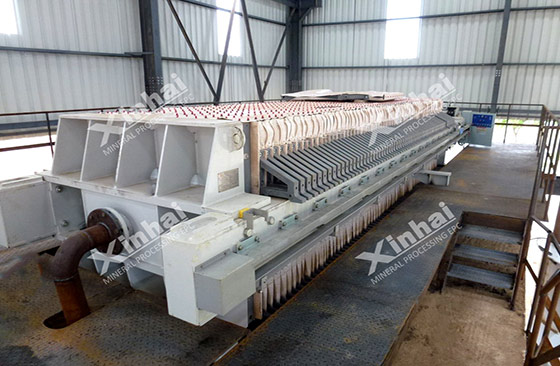
Lead-zinc ore has complex structure and more poor ore, which belongs to the more difficult to mine. In the mining process, a reasonable process should be formulated according to the specific ore properties to achieve the expected economic benefits. The general lead-zinc mineral beneficiation process is divided into four stages: crushing and screening stage —— grinding stage —— selection stage (flotation) —— concentration and dehydration stage. Next, we will introduce the specific process flow.

Lead-zinc minerals mainly contain galena, sphalerite, pyrite and chalcopyrite and other metal minerals, and the crushing operation mostly adopts two sections and one-closed road crushing screening process. Raw ore by trough feeder into the jaw crusher for coarse crushing, coarse crushing material into the vibrating sieve by belt conveyor, size qualified ore into the grinding stage, unqualified ore by another belt conveyor to the cone crusher for secondary crushing operation, form a closed road, until all mineral size qualified, shipped to the powder warehouse, ready to enter the next stage.

The crushed and qualified minerals are sent from the powder ore bin to the ball mill through the belt feeder and belt conveyor for grinding operation. The ground pulp is discharged to the linear vibrating screen for screening. The unqualified ore pulp flowing out of the linear vibrating screen and the hydrocyclone will be returned to the ball mill for regrinding until all the ore pulp is qualified. The overflow part after being checked and classified by the hydrocyclone enters the next stage.

The composition of lead-zinc ore is complex and diverse, and the floatability varies greatly, so flotation technology is mostly used. Lead-zinc ore is divided into three types according to the degree of oxidation: sulfide lead-zinc ore, oxide lead-zinc ore, and mixed lead-zinc ore. In the actual beneficiation process, the appropriate flotation method should be selected according to the oxidation degree of lead-zinc ore. The following is an example of common lead-zinc sulfide flotation separation:
Priority flotation method: The qualified pulp classified by the hydrocyclone enters the stirring tank, and then a strong collector is put into the stirring tank to carry out the lead flotation process, and the lead concentrate is preferentially recovered; then the tailings are passed through the slurry pump. It is sent to the high-efficiency stirring tank, and the zinc is activated by the chemical agent, and then enters the flotation cell machine for flotation operation, and finally the zinc concentrate is recovered.

Mixed flotation method: The qualified pulp classified by the hydrocyclone enters the stirring tank, and the collector is used to flotate the lead sulfide ore and part of the zinc sulfide ore at the same time to obtain the lead-zinc mixed concentrate, which is then pumped to the slurry. Enter the hydrocyclone for classification, and the qualified pulp enters the high-efficiency stirring tank; the unqualified part is returned to the ball mill for regrinding. Put chemicals into the stirring tank to remove the lead-zinc mixed concentrate, and then send it to the flotation machine for flotation separation.
In the flotation process, in order to effectively improve the concentrate recovery rate and concentrate index, appropriate flotation reagents will be added. The selection of reagent varieties and the dosage of reagents should be determined according to the specific ore properties.

The pulp foam after flotation is fed into the thickener through the slurry pump, and the solid particles suspended in the pulp in the concentration tank settle under the action of gravity to separate the solid and liquid, and the sludge deposited at the bottom is collected by the scraper to the center of the bottom and then discharge. The discharged ore sludge is pumped to the filter press through the slurry slurry, and the solid and liquid are separated through the filter medium, and finally the concentrate is obtained.

The material composition of lead-zinc ore is particularly complex. Different material compositions have different ore characteristics and require different beneficiation processes. Whether the beneficiation process of lead-zinc ore is correct will directly affect the beneficiation effect. It is recommended to formulate a scientific and reasonable mineral processing process according to the specific mineral processing test report to avoid unnecessary economic losses.
To find out more about our products and solutions, please fill out the form below and one of our experts will get back to you shortly.